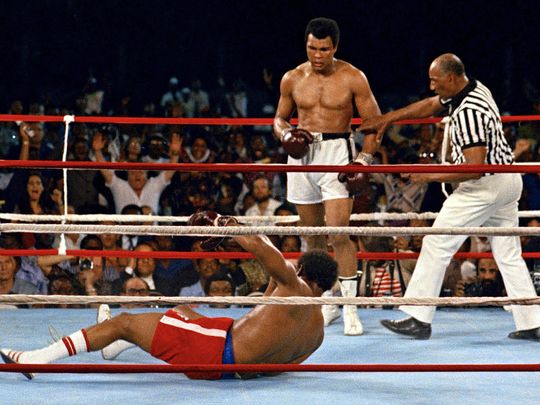Successful Nonprofit Arts Organizations, Like Successful Buildings, Depend on Successful Hierarchies
Level One:
Bricklayers. Carpenters. Stagehands. Electricians. Actors. Musicians. Painters. Singers. Writers.
Easy to find hacks. Difficult to find experts. Project-based.
Level Two:
Foremen. Department heads. Designers. Curators. Musical directors.
Small universe of successful ones. More skills required. Still project-based. Work toward a larger goal than Level One, namely a finished piece. Excellent collaboration skills.
Level Three:
Contractors. Directors.
Smaller universe still. Hire and manage Level One and Two (no requirement to perform at their skill level). Work toward a slightly larger picture, although still project based.
Level Four:
Architects. Executive/Artistic/General/Producing Directors.
Scarce universe of specialists. Determine “what.” Hire Level Three – several Level Threes, in fact. Understand projects, themes, and cohesion.
Level Five:
Owners. Boards.
Tiny, zealous universe. Hire Level Four. Determine “how.” Has personal stake.
Level Six:
The Community. The Mission.
Top of the hierarchy. Determines “why.”
Artists vs. Craftspeople – Nonprofit Arts Organizations Require the Former to Act as the Latter
Artists produce work from their creative souls, nurtured by a series of cultural, environmental, and psychological motivations. They create “a hat,” as Stephen Sondheim once wrote, “where there never was a hat.” Talented artists create from their current state of mind, without boundary.
Craftspeople produce work to fill a need. They possess a series of cultural, environmental, and psychological motivations which channel into art that produces a desired impact. Craftspeople create hats because they’re the best answer to a question.
All craftspeople are artists at their core. Many artists have no capacity to become craftspeople.
Nonprofit arts organizations require craftspeople. If the organization is more important than any artist, and the mission is more important than the organization, then employees on the organizational chart need to be, by definition, craftspeople divining an impact, not artists divining inspiration.
Self-Absorbed Executive Search Firms: You’re Lovely, You’re Talented, You’re Dreamy. But Tact is Not Among Your Strengths.
On behalf of all candidates, to executive search firms:
“Thank you so much for your 3 [hour-long] phone interviews. I presented 8 tremendously qualified candidates to the client and unfortunately, you were not selected. But your loss is [company’s] gain. I’ll keep your info on file and contact you if something comes up.”
We may like you, but it’s not why we applied to that job you’re representing. Your client’s happiness with you means nothing to us.
One hour would have been plenty, not three.
A simple “no, thanks” is more palatable than “didn’t I do a good job?”
Please don’t insult us with passive-aggressive jibber-jabber – we know you’re not going to contact us unless we apply to another client of yours.
And please don’t tell us about other candidates. If we’re not among them, we really don’t care.
Nonprofit Arts Strategic Plan Consulting: What You Say and What They Hear
Consultant: A strategic plan should generally include the following sections: mission statement; outline of goals, objectives, and activities; assessment of current resources; and strategic analysis.
- All nonprofits are mission-driven; take care to define your mission clearly.
- Having activities or programs clearly defined will help your nonprofit communicate with the public. Remember that activities and programs flow from your mission.
- Assess all of your resources — including money, people, expertise, skills, and other intangibles.
- “Strategies” are practical ideas about how to make the best use of your resources to achieve your goals.
Them: Blah-blah-blah MONEY, blah-blah-blah GOALS.
Result: A “strategic plan” proclaiming the need for more money with no action plan (except, of course, to raise money) and no justification (except, of course, to raise money).
In answer to your next questions:
- Way too often.
- They blame the consultant.
Have Nonprofit Performing Arts Organizations Moved Beyond the Idea of Artistic Directors?
Just read this article from an artistic director who wonders whether artistic directors should be their organization’s leader, whether the model is archaic. Nonprofit performing arts organizations take note. The leader is the mission, not the AD.
Is your artistic director the custodian of your mission, passing that duty on to the next artistic director? Or does the legacy of the organization reside in the legacy of the AD? Is “artistic vision” really a thing, or is it theory? Wouldn’t it make more sense for an executive director with an artistic sensibility to curate the company’s impact?
Maybe your leader ought to be the company’s leader, not merely the artistic leader. With artistic personnel hired to support the mission (instead of supporting the artistic director), your institution will become far more flexible as tastes and impacts change.
Transformational Persuasion: Muhammad Ali, George Foreman, Donald Trump, Hillary Clinton, and Why It Matters – Especially When You’re Running an Arts Organization
Muhammad Ali died last week. A quote from a Zairian in “When We Were Kings.”
“George Foreman? We had heard he was a world champion.
We thought he was white, then we realized he was black, like Ali….
Ali said [about Foreman], you’re the out-of-towner here.”
Nonprofit leaders that manage organizations, programs, and people well can be quite successful. But not transformational. Transformational leaders effortlessly persuade with passion about the mission, not the statistics. Their material requires no script, just practice to remove the “ums” and “uhs.”
Trump, for example, vigorously (and effortlessly) transforms experienced opponents into “out-of-towners.” Clinton relies on effective policy, experience, and “being right.”
Passion KOs policy every time. Ask George Foreman.
Doesn’t your arts organization’s constituency deserve the most transformative experience you can offer? Or do you settle for production excellence and competence?
Nonprofit Arts Board Members, Executive Directors, and Staffs: Has Your Board Been Assimilated? Have You?
Board membership for a nonprofit arts organization is a privilege. It requires commitment of time and money. It requires the urge to change things for the better.
It’s not for self-aggrandizement. It is not about being thanked endlessly. It’s not about banquets, galas, and being fed.
It’s a job.
Group thinking can be inspirational, but “groupthink” can poison your organization’s health. When your board only votes unanimously, for example, or the newly-approved mission is just reverse-engineered to current activities and reduced to pabulum, you may no longer have a board. You may instead have a Borg.
Borg members wait for orders. They don’t debate. Resistance is futile.
The Borg is powerful. Borg Presidents lead by autocracy. Borg Queens (often founders) drive staff away by insisting the organization’s activities revolve around them. Borg Drones atrophy.
Board or Borg?
Special 2016 “Alan Harrison’s Birthday” Edition: Pack Up the Babies and Grab the Old Ladies – And an Easy-To-Fulfill Wish List

I was born on May 14. Conceived on a hot August night. Neil Diamond would’ve been proud. He was old enough to have a kid then, so…who knows? Brother Love? Are you my papa?
From him, I want flowers.
From you, I want (this is your cue):
- A 137-word card. ( <–Yes, that’s a link.)
- Share your favorite 137 Words post with your social network (that’s “share,” not “like”).
- To join a great company with a great mission. In Seattle.
- Health for The Kid.
- Guidance for The Kid.
- The love of my life to be happy, fulfilled, and curious. You know who you are.
- The ability for you to guide your favorite nonprofit to safety, security, and success.
- Brilliantly measurable missions, better than you believe you’re capable of.
- Complete, successful execution of those brilliant new missions.
- Pie, not cake.
Nonprofit Arts Executives: After the Ask (for anything, actually), It’s Fast “Yes,” Slow “No”… Try a Slow “Yes” Instead
If you don’t hear right away, it’s probably “no.”
That goes for asks, offers, hiring, and anything else you require.
And that goes for you, too, when your stakeholders ask, offer, hire, and anything else they may require.
Reflection is the predictable path toward rationalization to the “no.” This is why the phrase “upon reflection” is almost always followed by a version of “we’ve decided not to change.” After all, as a rule, it’s easier not to change than to take a risk.
Many arts charity executives preach the glory of “managed risk” (an oxymoron, of sorts) and value fiscal responsibility above social impact. To be clear, social impact is central to the success of the mission; fiscal responsibility is a valuable business practice.
If “yes” leads to greater impact, then stop saying “no”… especially upon reflection.
Arts Organizations: 137th Post, 137 Thanks, and 137 (of Other People’s) Words That Guide Inspiring Leaders
“We must reject the idea — well-intentioned, but dead wrong – that the primary path to greatness in the social sectors is to become “more like a business.” Most businesses…fall somewhere between mediocre and good.” (Collins)
“If a man does not keep pace with his companions, perhaps it is because he hears a different drummer. Let him step to the music which he hears, however measured or far away.” (Thoreau)
“People don’t buy WHAT you do, they buy WHY you do it.” (Sinek)
“When they say things like, we’re going to do this by the book, you have to ask, what book? Because it would make a big difference if it was Dostoevsky or, you know, ‘Ivanhoe.'” (Anderson)
“‘To be is to do.’ (Socrates) ‘To do is to be.’ (Sartre) ‘Do be do be do.’ (Sinatra)” [Vonnegut compilation]
Arts Boards: What to do When Your Arts Leader(s) No Longer Know the Difference Between Boredom and Discipline
Your theater produced a hit. Tickets sold out for days. Extended as far as you could.
Do it again next year?
No. Your outward-facing mission execution is more important than the sales of any one play. Gauge this particular play and its impact. If it’s a fit (not just a hit), consider rescheduling the next production and run this play until its inevitable end. Then close it forever.
If all your plays are mission-driven, every experience is predictable in its impact. That’s called discipline, and it’s what makes arts organizations successful.
Too many artistic directors choose to produce vanity events instead. That’s called boredom, and board chairs have to act on that kind of crisis in leadership.
Coke may make many products, but they still make Coke. Remember what happened when they got bored with Coke’s taste?
How You Can Solve Diversity With Your Nonprofit Arts Organization!
You can’t.
Arts organizations challenge, reflect, and engage. They don’t solve.
And remember, race is only one small bit of cultural diversity, not all of them. Just as the opposite of love isn’t “hate,” but “indifference;” the opposite of diverse isn’t “white,” but “homogeneous.”
I read a political blog recently about the Democratic Party presidential race. What troubled me were these words:
“What I’m crossing my fingers for is that in ten years or so we’ll get… a young,
charismatic democratic socialist who runs for president. (Preferably this
candidate would be a woman or a non-white person or, ideally, both.)”
Isn’t that parenthetical statement just as intolerant as one where “not” had been inserted after “would?”
Diversity isn’t only about race or gender or any of myriad other categories. It’s about power, shared equally, with specific impact.
Face-palms in the arts world: Oh, somewhere in this favored land the sun is shining bright; the band is playing somewhere, and somewhere hearts are light

Somewhere…
- A managing director is face-palming because the budget draft is still a departmental wish list;
- A marketing director is face-palming because the artistic director decided that he knew more about marketing than the marketing director;
- A development director is face-palming because the board chair has fashioned a multi-million dollar “capital” campaign (actually, a “get-out-of-debt” campaign) with no feasibility study, no regard to the annual development campaign, and no accountability to anyone else;
- An artistic director is face-palming because the plays she wants to do don’t jibe with the mission of the company;
- A board member is face-palming because every meeting is about reporting, money, by-laws, and the gala;
And somewhere, performing arts audiences and constituents are collectively face-palming, hoping against hope that the arts folks in their region remember that for them, it’s about the art.
Life on the Unraveling Nonprofit Arts Fringe: Why Hiring Experience and Guile Trumps Everything Else
Actor Hugh O’Brian is said to have coined “The 5 Stages of an Actor’s Career;”
- Who is Hugh O’Brian?
- Get me Hugh O’Brian.
- Get me a Hugh O’Brian type.
- Get me a young Hugh O’Brian.
- Who is Hugh O’Brian?
We’re in contact with hundreds of highly-experienced, resilient people who have made a career in the arts – and they’re having difficulties getting back into the field.
Some of it is ageism. Boards use headhunters to find smart young guns to lead departments or organizations — only to find that instead, they’ve hired brilliant 2-year placeholders with few people skills, entitlement issues, little flexibility, and quick parachutes.
Studies show those >50 stay longer than those under <40, are more productive, have better improvisational skills and flexibility, and are likelier to bring success.
Forget headhunters. Do your own search. Hire someone better than you.
Art in a Plutocratic Oligarchy: Send Lawyers, Guns, and Money
In the USA, we made up the phrase “freedom of expression.”
Constitutionally, the first amendment states that Congress can’t pass laws that, among other things, designate a national religion or abridge the freedom of speech or the press.
Often, these rights are lumped together and expanded to include artistic expression.
And political contributions.
And porn.
But in an America where we have officially anthropomorphized businesses, can the arts be effective tools for positive change? Or simply a numbing agent against negative change?
Have retribution-fearing foundations and donors unwittingly turned nonprofit arts charities into a series of retribution-fearing crab buckets? With the exception of organizations that seek measurable impact using arts as a means (not an end), have we become participants in social malaise?
If so, send lawyers, guns, and money to get you out of this.
Negatively Commenting on the Title of a Post (What You’re Reading Now) is Akin to PETA Boycotting “To Kill a Mockingbird” Because, You Know, They’re Killing a Mockingbird.
Recently, a foundation advocate negatively commented on the title of a 137 Words blog post. On the title, not the post.
As Ben Franklin once said, “We are all born ignorant, but one must work hard to remain stupid.”
Thank you for reading 137 Words and sharing it with your colleagues. We’re pretty amazed when 137 Words evokes derision, praise, or questions.
If you haven’t shared yet, please do – karma will be kind.
In 6 months, 137 Words has picked up about 6,000 readers. That exceeds all our expectations. We are truly grateful.
And to those like this advocate who only read the title and not the posting (what you’re reading now), I only wish bliss. Or, should I say, additional bliss.
Harsh? Maybe so. Because I am all too often a card-carrying member of the Right to Extreme Stupidity League.
The 7 Most Important Things Not to Do About Not Doing the 52 Most Important Things
I write this blog and read many others. I find that people responding to nifty list posts (6 Strategic Ways to Get the Best Board of Directors) are looking for shorthand answers to longhand questions. I understand the appeal; work is complex and speed is valued over thoughtfulness. But the awkward and obvious question is:
“Are there only 6 ways to get the best board? Or are these just the first 6 you thought of?”
Same goes with negative posts (How NOT to Have a Sucky Board of Directors). I’ve been guilty of this, usually after a recent bad experience. Sorry about that, because the obvious and awkward question is:
“There are a kerjillion ways to have a sucky board. Can’t you help me get a good one?”
I’ll try to be a better poster. And here are 137 ways how…
Kibitzing is the Road to Hell for Charitable Organizations: “You know what you SHOULD do…”
Kibitzing. Webster’s definition: “watching other people and making unwanted comments about what they are doing.”
Good intentions (egad). Some people pay for the privilege via their donation or board service. My mother believes it’s her birthright.
For arts charities, kibitzing mainly involves comments, programs, and activities that are unsupported by research or any evidence of success.
Instead: come with solutions rather than problems. Shortfalls are as unintentional as bad art. No one intends red ink or a lousy play with bad acting. But rather than more bake sales, auctions, galas, or (egad) a “give-a-million-dollars-or-we’ll-go-bankrupt-on-Tuesday” campaign; rather than creating a program committee (because anyone can pick plays) or a marketing committee (because anyone can market the arts), work with your ED toward real, verified solutions.
The road to hell is paved with kibitzers. The road to bankruptcy, too.
Executive Directors: How Do You Control Your Self-Righteous, Burnout-Induced Rage Because, Well, Nobody Knows the Trouble You’ve Seen and Nobody Knows Your Sorrow?
I read an earnest article about burnout and its inevitability for certain nonprofits. According to the article, everyone running a charity should watch for certain signs. Included: “chronic underfunding” (always stressful in any operation), “documentation demands” (spending extra hours issuing reports for funders who do not pay for the extra time/staff necessary to prepare that report), and more.
What to do about it? I’ve tried intense sarcasm, shouting at the top of my lungs, turning crimson, and bellowing the occasional Charlie Brown “AAUGH!” Those seemed like good ideas at the time, but proved to be exactly the opposite. Funny that.
The article recommends that funders provide additional funds for a) reports and for b) executive directors to take sabbaticals.
Wow. Sounds so simple when you put it that way, doesn’t it?
Wait, there’s that sarcasm again. AAUGH.
Successful Trusteeship, or “Isn’t Writing a Big Honking Check Enough?”
Good board members:
- aren’t ambassadors. Ambassadors wait for people to come to them. They’re zealots. They zealously get donations and zealously get new board members.
- don’t try to get. They work together and with staff and they get.
- personally donate among their three largest monetary donations that year. Not from their company…from them.
- are forensic analysts, (not governors). Remember, the bottom line is “Are we living our mission? Is the mission working?” They see to it that it does, regardless of the financials.
- insist that board meetings are too important to be reporting vehicles. Productive monthly board meetings can be like having twelve mini-retreats.
Think of it this way: if each board member’s consulting rate is $100/hour and your charity has 20 board members, do you want to spend $2,000/hour talking about the past or the future?
Rethinking the Group Job Interview – Consensus? Abdication? Or Focus Group?
I’ve tortured people in the group interview process. I thought I was offering consensus. Buy-in. Group drive.
I was wrong.
Wrong. Wrong. Wrong.
Oh, so wrong.
To everyone I’ve ever put through that, on either side of the table, I apologize. I’ll never do it again. Promise.
There are four decisions: autocratic (I say), consultative (I say with your input), democratic (we vote, losers weep), consensus (we vote and everyone backs the decision).
As practiced, the group interview might have evolved into a method for managers to abdicate responsibility in the name of consensus. While consensus is ideal, the group-think process can too often be dominated by a crank in the corner with issues, motives, and insecurities. And, possibly, an unknown agenda.
Group-think promises consensus but can preclude innovation.
And why would you ever choose to preclude innovation?
Disinterested Advocacy: When Issues Become Global, the Pool for Support Grows Exponentially
Women’s issues are not about women. Race issues are not about people of color.
And when Mars attacks Oklahoma, the issues will not be about Oklahoma.
I visited a domestic abuse nonprofit. They do great work, but are ghettoized by donors as a “women’s issue” charity. The executive director wondered how they might be able to globalize the cause (and increase revenues).
“Domestic abuse is a societal problem,” she complained. “And I worry that without some men providing disinterested advocacy, we’ll only attract women donors.”
But every time she interviewed qualified men for marketing or development positions (and they’d graduate to a final 10-on-1 group interview), the staff and board balked. “Just not a good fit,” they’d euphemize. And they’d recommend another qualified woman.
Is your charity’s issue exclusively yours? If not, how are you communicating that?
Hiring 103: Do Unto Others, for Pete’s Sake!
Oh, those shoddy, “industry standard” hiring practices. They’re still here.
To follow up on this, this, this, this and this,
1) Communicate quickly, at least twice.
- We got your resume.
- Thanks for your interest, but you are not being considered (within a week of close).
2) When you’ve interviewed someone, call them (no email) within a week.
- Thanks for your interest, but you are no longer being considered.
- We’re still interviewing people. I’ll call you on [date range].
3) When you’ve interviewed someone more than once and have hired someone else, call them (no email) immediately.
- Thanks for your interest, but we’ve chosen someone else.
4) Never…
- …send communications stating who you’ve hired (salt, meet wound)
- …let them know they were in the final cut (see above)
- …say you’ll be in touch and then disappear.
- …be rude.
- …assume job-seekers are psychics.
I died this morning.
I was an energetic, charismatic, visionary leader.
I worked at least 60 hours a week.
The office is by turns chaotic and paralyzed.
Some are crying.
Some are ecstatic.
Outside the charity, most don’t care.
Not their problem.
Trustees are panicking. Staff members are traumatized.
Some are taking charge, Alexander Haig-style.
Others are forming committees to decide what to decide.
Still others are composing resignations.
Reporter on line 1.
I knew every board and staff member.
And their families.
I knew every major donor.
I knew local foundation leaders.
Benefactors on line 2.
Beneficiaries on line 3.
I knew financials.
I knew history.
I had passwords.
Vendors on line 4.
I knew where everything was.
I shared that information.
But that was 5 years ago.
To employees who are no longer here.
Too bad there wasn’t a written succession policy.
Not my problem.
Hiring 102: Breaking the Code on Ageism (We’re on to You.)
You don’t have to be Alan Turing to break the HR “can’t-ask-how-old-you-are” code:
“How is your energy level?” = “Are you a geezer?”
…Correct response: “I run 26 marathons daily.”
“What were you doing before 2001?” = “What were you doing before I turned 10?”
…Correct response: “I’m 35 years old with 30 years’ experience.”
“When did you graduate college?” = “I’m checking my arithmetic to determine your age.”
…Correct response: “When I was 22.”
“How flexible are you?” = “Is your mind as ossified as a petrified fossil?”
…Correct response: “I’m currently holding the phone with my pinkie toe while simultaneously writing Iraq’s new constitution.”
Seriously, though, hiring managers: according to the US Bureau of Labor Statistics, workers 45–64 stayed twice as long as those 25–34 — so those under 40 are a much higher risk of leaving you high and dry.
So stop it.



















